I would like to use a RNN for time series prediction to use 96 backwards steps to predict 96 steps into the future. For this I have the following code:
#Import modules
import pandas as pd
import numpy as np
import tensorflow as tf
from sklearn.preprocessing import StandardScaler
from tensorflow import keras
# Define the parameters of the RNN and the training
epochs = 1
batch_size = 50
steps_backwards = 96
steps_forward = 96
split_fraction_trainingData = 0.70
split_fraction_validatinData = 0.90
randomSeedNumber = 50
helpValueStrides = int(steps_backwards /steps_forward)
#Read dataset
df = pd.read_csv('C:/Users1/Desktop/TestValues.csv', sep=';', header=0, low_memory=False, infer_datetime_format=True, parse_dates={'datetime':[0]}, index_col=['datetime'])
# standardize data
data = df.values
indexWithYLabelsInData = 0
data_X = data[:, 0:3]
data_Y = data[:, indexWithYLabelsInData].reshape(-1, 1)
scaler_standardized_X = StandardScaler()
data_X = scaler_standardized_X.fit_transform(data_X)
data_X = pd.DataFrame(data_X)
scaler_standardized_Y = StandardScaler()
data_Y = scaler_standardized_Y.fit_transform(data_Y)
data_Y = pd.DataFrame(data_Y)
# Prepare the input data for the RNN
series_reshaped_X = np.array([data_X[i:i + (steps_backwards+steps_forward)].copy() for i in range(len(data) - (steps_backwards+steps_forward))])
series_reshaped_Y = np.array([data_Y[i:i + (steps_backwards+steps_forward)].copy() for i in range(len(data) - (steps_backwards+steps_forward))])
timeslot_x_train_end = int(len(series_reshaped_X)* split_fraction_trainingData)
timeslot_x_valid_end = int(len(series_reshaped_X)* split_fraction_validatinData)
X_train = series_reshaped_X[:timeslot_x_train_end, :steps_backwards]
X_valid = series_reshaped_X[timeslot_x_train_end:timeslot_x_valid_end, :steps_backwards]
X_test = series_reshaped_X[timeslot_x_valid_end:, :steps_backwards]
Y_train = series_reshaped_Y[:timeslot_x_train_end, steps_backwards:]
Y_valid = series_reshaped_Y[timeslot_x_train_end:timeslot_x_valid_end, steps_backwards:]
Y_test = series_reshaped_Y[timeslot_x_valid_end:, steps_backwards:]
# Build the model and train it
np.random.seed(randomSeedNumber)
tf.random.set_seed(randomSeedNumber)
model = keras.models.Sequential([
keras.layers.SimpleRNN(10, return_sequences=True, input_shape=[None, 3]),
keras.layers.SimpleRNN(10, return_sequences=True),
keras.layers.Conv1D(16, helpValueStrides, strides=helpValueStrides),
keras.layers.TimeDistributed(keras.layers.Dense(1))
])
model.compile(loss="mean_squared_error", optimizer="adam", metrics=['mean_absolute_percentage_error'])
history = model.fit(X_train, Y_train, epochs=epochs, batch_size=batch_size, validation_data=(X_valid, Y_valid))
#Predict the test data
Y_pred = model.predict(X_test)
prediction_lastValues_list=[]
for i in range (0, len(Y_pred)):
prediction_lastValues_list.append((Y_pred[i][0][1 - 1]))
# Create thw dataframe for the whole data
wholeDataFrameWithPrediciton = pd.DataFrame((X_test[:,1]))
wholeDataFrameWithPrediciton.rename(columns = {indexWithYLabelsInData:'actual'}, inplace = True)
wholeDataFrameWithPrediciton.rename(columns = {1:'Feature 1'}, inplace = True)
wholeDataFrameWithPrediciton.rename(columns = {2:'Feature 2'}, inplace = True)
wholeDataFrameWithPrediciton['predictions'] = prediction_lastValues_list
wholeDataFrameWithPrediciton['difference'] = (wholeDataFrameWithPrediciton['predictions'] - wholeDataFrameWithPrediciton['actual']).abs()
wholeDataFrameWithPrediciton['difference_percentage'] = ((wholeDataFrameWithPrediciton['difference'])/(wholeDataFrameWithPrediciton['actual']))*100
# Inverse the scaling (traInv: transformation inversed)
data_X_traInv = scaler_standardized_X.inverse_transform(data_X)
data_Y_traInv = scaler_standardized_Y.inverse_transform(data_Y)
series_reshaped_X_notTransformed = np.array([data_X_traInv[i:i + (steps_backwards+steps_forward)].copy() for i in range(len(data) - (steps_backwards+steps_forward))])
X_test_notTranformed = series_reshaped_X_notTransformed[timeslot_x_valid_end:, :steps_backwards]
predictions_traInv = scaler_standardized_Y.inverse_transform(wholeDataFrameWithPrediciton['predictions'].values.reshape(-1, 1))
edictions_traInv = wholeDataFrameWithPrediciton['predictions'].values.reshape(-1, 1)
# Create thw dataframe for the inversed transformed data
wholeDataFrameWithPrediciton_traInv = pd.DataFrame((X_test_notTranformed[:,0]))
wholeDataFrameWithPrediciton_traInv.rename(columns = {indexWithYLabelsInData:'actual'}, inplace = True)
wholeDataFrameWithPrediciton_traInv.rename(columns = {1:'Feature 1'}, inplace = True)
wholeDataFrameWithPrediciton_traInv['predictions'] = predictions_traInv
wholeDataFrameWithPrediciton_traInv['difference_absolute'] = (wholeDataFrameWithPrediciton_traInv['predictions'] - wholeDataFrameWithPrediciton_traInv['actual']).abs()
wholeDataFrameWithPrediciton_traInv['difference_percentage'] = ((wholeDataFrameWithPrediciton_traInv['difference_absolute'])/(wholeDataFrameWithPrediciton_traInv['actual']))*100
wholeDataFrameWithPrediciton_traInv['difference'] = (wholeDataFrameWithPrediciton_traInv['predictions'] - wholeDataFrameWithPrediciton_traInv['actual'])
Here you can have some test data (don't care about the actual values as I made them up, just the shape is important) Download test data
How can the output of the Y_pred data be interpreted? Which of those values yields me the predicted values 96 steps into the future? I have attached a screenshot of the 'Y_pred' data. One time with 5 output neurons in the last layer and one time only with 1. Can anyone tell me, how to interpret the 'Y_pred' data meaning what exactly is the RNN predicting? I can use any values in the output (last layer ) of the RNN model. The 'Y_pred' data always has the shape (Batch size of X_test, timesequence, Number of output neurons). My question is targeting at the last dimension. I thought that these might be the features, but this is not true in my case, as I only have 1 output features (you can see that in the shape of the Y_train, Y_test and Y_valid data).
**Reminder **: The bounty is expiring soon and unfortunately I still have not received any answer. So I would like to remind you on the question and the bounty. I'll highly appreciate every comment.

